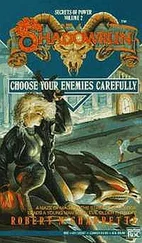For the CIC, and soon for the CIA, Gehlen was a gift from Ares, the god of war.
In late 1946, a year and a half after the war ended, the CIC hired Gehlen, code name Utility, and his entire network and set him up at a secret location in Pullach, a small town south of Munich and the site of a former Waffen SS training camp. At the insistence of the United States, Gehlen promised not to employ SS, SD, or Gestapo men. But sensing that Washington was just trying to cover its backside, Gehlen stuffed the upper echelons of the Org with war criminals, using phony papers and false names to avoid detection and prosecution at Nuremberg. How many? Historian Timothy Naftali, a specialist on Gehlen, cautiously concluded: “At least one hundred of Gehlen’s officers and agents had served with the SD or Gestapo, and the number may in effect be significantly higher.”
Naftali and journalist Christopher Simpson have compiled a partial list of the major Nazi war criminals who ran the Gehlen Org. Besides Klaus Barbie, the Butcher of Lyon, there are four especially vicious Nazis on their list—Alois Brunner, Franz Six, Emil Augsburg, and Erich Deppner. The crimes against humanity of these former Nazis are important because they illustrate the kind of murderers the United States either approved for employment in Operations Rusty and Zipper or indirectly hired by looking the other way.
• • •
SS Major Alois Brunner was one of the first former Nazi colleagues Gehlen hired. Brunner’s credentials were impeccable. According to recently declassified CIA files, he was the architect of the Nazi extermination system, which began with penning Jews in ghettos so they could be easily located when the time came to load them into wagons, vans, and trains for transport to death camps. Eichmann considered Brunner “his best man.”
Unlike Eichmann, however, Brunner was more than just a genocide planner. He trained cadres of Gestapo, German police, SS officers, and Nazi collaborators, like Trawniki men, in the art of exterminating Jews with speed and efficiency. And he practiced what he preached.
Brunner had rounded up and sent an estimated forty-seven thousand Austrian Jews for deportation, personally leading one transport to an SS camp outside Riga, Latvia, before the death camps were up and running. From Vienna, Brunner went to Berlin, where he helped deport German Jews. He was then posted to Greece, where he sent an estimated forty-three thousand Salonika Jews to Auschwitz and Treblinka. After Greece, he was posted to France, where he took over the bustling Drancy transit camp outside Paris. As Drancy commandant, he sent another estimated twenty-five thousand men, women, and children directly to the gas chambers. From France, Brunner went to Slovakia to mop up the last remaining Jews.
France never forgave Brunner. In 1954, it convicted him in absentia and sentenced him to death. At the time, he was working for the United States in the Gehlen Org under the name Alois Schmaldienst. Fearing for his life, he fled to Syria, probably on the Vatican ratline, under the name Dr. Georg Fischer.
Syria welcomed Brunner, granted him asylum, and hired him to create a state security organization. Not long after he settled in Damascus, the CIA hired him through the Gehlen Org to help Egypt develop its brutal security police force. Brunner’s presence in the Middle East did not go unnoticed. The Israeli Mossad sent him a special greeting, but he survived. The letter bomb merely blinded him in one eye and tore off several fingers of his left hand.
When France and Germany learned that Brunner was living comfortably in a Damascus hotel, they requested his extradition. Syria refused to give him up. In 1987, Brunner granted the Chicago Sun-Times an interview during which he was as candid as a protected Nazi war criminal could be. “The Jews deserved to die. I have no regrets,” he said. “If I had the chance, I would do it again.” Brunner is probably dead now. If not, he would be over one hundred years old.
• • •
Dr. Franz Six was a prewar college professor with degrees in law and political science and dean of the faculty of the prestigious University of Berlin. During the war, SS Brigadier General Six was an intelligence officer like Gehlen, a protégé of Heinrich Himmler, and an Einsatzgruppe leader responsible for the murder of thousands of Jews and other civilians in the Soviet Union, according to recently declassified CIA files. Eichmann called him Streiber (eager beaver).
After the war, one United States, so to speak, used the CIC to find and punish Dr. Six for war crimes. He avoided detection and arrest by joining the other United States, which used the CIC to help staff the Gehlen Org. Unaware that Dr. Six was working for the United States, however, an ambitious CIC investigator discovered him and turned him over to the U.S. military tribunal at Nuremberg before the United States could rescue him.
Nuremberg convicted Dr. Six of murder and sentenced him to twenty years in prison. An attorney on the team that prosecuted Einsatzgruppen criminals at Nuremberg called Dr. Six “one of the biggest swine” of them all. After Dr. Six served four years in prison, America granted him clemency as part of its generous program to free Nazi war criminals convicted by the United States. A week later, Dr. Six was back at work for the United States in the Gehlen Org. He died a free man in Germany.
Dr. Emil Augsburg was a Polish-born colleague of Dr. Six with a doctorate in Soviet studies. In 1941, he joined the SD. His assignment was to carry out “special duties” in Poland, a euphemism for killing Polish Jews, according to recently declassified CIA files. Like Dr. Six, Augsburg also led an Einsatzkommando unit in the Crimea region of Russia, where the German army had captured Iwan Demjanjuk in May 1942. Augsburg’s personnel records show that he had achieved “extraordinary results… in special tasks,” another euphemism for the murder of Jews. The extraordinary results earned him a promotion to major.
Around the same time the German army took Demjanjuk prisoner during the battle of Kerch, Augsburg was seriously wounded in an air attack and evacuated to Berlin. After his recuperation, the SS assigned him to create an index of Soviet leaders to be targeted for behind-the-lines assassination. After the war, Augsburg hid in a Benedictine monastery in East Germany and eventually made his way to the Vatican, where he found a safe haven.
His creation of the Soviet name index made Augsburg, aka Althaus and Alberti, extremely valuable to the Org. Gehlen hired his former colleague and gave him two critical espionage assignments—to supervise the agent net that interrogated émigrés and defectors from the East, and to create airtight cover stories for Org agents scheduled to cross into the Soviet Union on espionage assignments. Gehlen considered him “a shining star… a godsend.”
Poland convicted Augsburg in absentia, but Germany declined to hand him over for punishment. Instead it hired him to work for Gehlen, who was now employed by the new West German intelligence service. Germany eventually fired Augsburg on suspicion of working for communist East Germany. Like Dr. Six, Emil Augsburg died a free man.
SS Major Erich Deppner was to Holland what Klaus Barbie was to France and Robert Jan Verbelen was to Belgium. His assignment from Berlin was to crush the virulent Dutch resistance. As the head of a security team, Deppner is credited with torturing and murdering approximately 450 Dutch resistance fighters, according to Dutch sources. He also is credited with killing the last remaining Soviet POWs held in Holland’s Kamp Amersfoort.
Deppner commands a highly emotional place in the memory of Holland’s Jewish community. He was the first commandant of the Dutch transit camp of Westerbork, from which more than one hundred thousand Jews, including Anne Frank, were transported to death camps—at first to Auschwitz, and later to Sobibor during the time John Demjanjuk was allegedly serving as an SS guard there.
Читать дальше












